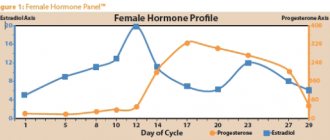Recommended Procedures
Figure correction using the Maximus device
Thermage – RF body lifting
Removal of stretch marks using Fraxel, ResurFX, AcuPulse lasers.
Photorejuvenation using the M22 device
Skin tightening after weight loss
Loose, sagging skin on the abdomen most often appears after intense weight loss. The problem is so specific that neither exercise nor a vitamin diet can completely eliminate wrinkles and folds, especially in the lower abdomen. Aggressive weight loss leads to the loss of a large amount of not only fat, but also muscle mass. At the same time, the formation of new collagen and elastin fibers is inhibited by the hormone cortisol (stress hormone), which is released in excess during such a stressful load on the body. As a result, the skin loses its tone, and a hardware tightening of the abdominal skin is required, because the body does not have enough resources for self-healing.
Tips for maintaining beautiful skin for those who are on a diet
Of the most common prescriptions for maintaining the attractiveness of the skin both in everyday life and in the process of losing weight through diets, the following can be listed.
- Use nourishing creams for the face and body every day: this will help saturate the skin with moisture, maintain its elasticity and speed up regeneration.
- Do not take a hot bath, it is best to take a shower
- Get used to rinsing with cold water for 20-30 seconds after a shower - this will help maintain skin tone and strengthen it.
- Use self-massage or cosmetic massage with the help of a professional at least once a week
- Try to avoid prolonged exposure to the sun. Ultraviolet rays help tighten the skin only in small doses. As a result of an overdose of UV radiation, the skin begins to age too quickly, so it is recommended to use sun protection products
- Be careful about the physical activity prescribed to you. If your body mass index is above 30 kg/m2, you should not do all the exercises while standing, because this will be too much strain on the joints and blood vessels of the legs. Pay attention to water aerobics and all exercises lying on the mat
WE ALSO ADVISE YOU TO READ: Breast lift with and without implants
Causes
Overstretching of the skin on the abdomen leads to the formation of an unsightly skin pouch in the following cases:
- Age-related loss of tone and a decrease in the thickness of subcutaneous tissue cause thinning of the dermal layer. Against the background of a decrease in the volume of natural synthesis of collagen and elastin, a dense but easily stretchable layer of skin is formed.
- Stretching of the skin on the abdomen during pregnancy. Due to rapid weight gain, increased abdominal volume and hormonal changes, intradermal microtears often occur. As a result, the skin of the abdomen not only becomes flabby and sagging, but also becomes covered with striae (stretch marks).
- Rapid weight loss is the most common reason for skin tightening after weight loss, when sagging abdomen is caused by excess length of elastin and collagen fibers against the background of reduced volume.
Loose skin on the body: causes
The body can lose elasticity for various reasons. Let's look at the most common of them.
After childbirth
The pregnancy period is characterized by a sharp increase in abdominal volume. When the baby is born, the skin should gradually return to its original volume. However, this does not always happen: especially if this is not the first pregnancy, and also if stretch marks have formed.
After losing weight
Contrary to popular belief, sudden weight loss does not lead to achieving ideal shape. The fact is that as a result of rapid weight loss, the skin begins to sag: previously it supported large volumes of fatty tissue, so it cannot immediately restore elasticity.
Up to 30 years old
Flabbiness of the body in people under 30 years of age can be caused by sudden changes in weight, low physical activity, sedentary lifestyle, hereditary predisposition, increased dry skin, abuse of sunbathing, poor nutrition, stress and some other factors.
After 40 years
In this case, sagging is usually caused by natural age-related changes in the body: wrinkles appear, the connection between the skin and muscle tissue decreases, the production of elastin, hyaluronic acid, etc. decreases.
Expert commentary
Ekaterina Ilyalova, dermatologist-cosmetologist
Dermatologist Ekaterina Ilyalova, an expert at the Premium Aesthetics Academy of Cosmetology, talks about tightening the abdominal skin:
“After sudden weight loss, and often just over the years, the stomach tends to sag. In addition, the texture of the skin may change, ranging from stretch marks to wrinkling. A tummy tuck is one of the most popular plastic surgeries in the world. But the operation is associated with high risks. Fortunately, today there are non-surgical lifting procedures. Using the Thermage device, in just one procedure you can achieve a pronounced lifting effect of abdominal tissue, which will only increase over the course of several months. The procedure with the Maximus device generally has a double effect, combining RF body lifting with training of the subcutaneous muscles through dynamic muscle activation of DMA. This is one of the best and most effective ways to tighten the skin of any area. The following hardware techniques will help improve the texture of the skin, increase its tone and eliminate stretch marks: Fraxel, ResurFX lasers, photorejuvenation using the M22 device.”
Modern cosmetology has a number of non-surgical corrective methods that trigger natural self-healing processes in the skin. When tightening the skin after losing weight, it is important to use a complex effect. It is necessary to simultaneously adjust your diet, exercise intensively, drink more fluids and attend cosmetic procedures. Then the effect will be quite fast and will last for a long time.
Zones
As you get older, all the skin on your body becomes flabby. However, there are certain parts of the body where sagging appears earlier.
On the stomach
In women, sagging skin in this area is most often a consequence of a history of pregnancy, while in men this phenomenon usually occurs due to poor nutrition, a sedentary lifestyle, drinking alcohol, and sudden changes in weight.
On foot
Legs lose elasticity due to rapid weight loss, low physical activity, age-related or hormonal changes.
On the hips
Flabbiness of the thighs is often caused by low skin tone, the presence of local fat deposits, weight fluctuations, and metabolic disorders. Most often this problem affects women.
On the buttocks
In the buttocks area, signs of sudden weight loss are also very noticeable. In addition, sagging skin here may look due to the formation of cellulite, age-related decrease in tissue trophism, etc.
On hands
Loss of firmness in the arms is a common problem among women. Hormonal changes, endocrine disorders, age-related slowdown of metabolic processes, etc. can contribute to the appearance of a deficiency.
Features of plastic surgery after massive weight loss
- The need for staged operations
- Longer rehabilitation period for skin healing,
- Difficulty in preoperative planning.
- The need for a preparatory stage before surgery.
- Possibility of additional interventions to correct postoperative scars
Any operation performed to correct changes in body contours after severe weight loss differs from the same operation performed for other indications. Each type of surgery after weight loss has its own characteristics.
Face and neck lift – longer incisions and the need for a simultaneous neck lift. More often, it is not necessary to perform one-stage blepharoplasty, including canthopexy.
Shoulder lift (brachioplasty) – long scars with possible transition to the skin of the forearms. The difficulty of preoperative marking is associated with the need for maximum camouflage of an extended scar. The need to use liposuction, which does not involve removing fat, but mobilizing the skin while preserving the feeding vessels.
Breast lift (mastopexy) – the need to transpose the nipple-areolar complex to a greater distance while preserving the feeding vessels against the background of the threat of their overstretching, torsion, and kinks (which significantly impairs the blood supply to the nipple-areolar complex). Often, insufficient volume of breast tissue requires breast augmentation using implants or lipofilling.
Tummy tuck (abdominoplasty) - mobilization of the skin-fat flap must be performed with maximum preservation of the feeding vessels, which requires liposuction as an element of mobilization of the flap. When suturing the skin there should not be the slightest tension along the suture line. There is a high probability of navel ischemia during its transfer.
Thigh lift (medial or circular) - the same features as with abdominoplasty: there should be no tension on the skin flap along the suture line, mobilization using liposuction is necessary. With a circular lift, a vertical scar may be added along the inner surface of the thigh.
Buttock lift (gluteoplasty) – a posterior transverse incision is required along the top edge of the underwear, through which the tissues of the buttocks and upper third of the thigh are mobilized to maximize the use of one’s own tissues. And if there is a deficiency of your own tissue, you may need to increase the volume of the buttocks using implants or lipofilling.
Torsoplasty (combines a lift of the back, buttocks, abdomen, hips) - performed by two teams, more time is spent on the operation and the operation has a longer postoperative period.
Plastic surgery of the pubis and external genitalia - often performed during abdominoplasty to avoid asymmetry, accompanied by swelling of the genital area.
Plastic surgery after weight loss: price
| Name of service | Cost, rub.) |
| Different types of plastic surgery that may be necessary after severe weight loss | |
| Abdominoplasty | from 100,000 |
| Liposuction | from 20 000 |
| Torsoplasty (body lifting) | from 300,000 |
| Brachioplasty (hand surgery) | from 80 000 |
| Gluteoplasty (buttock surgery) | from 65 000 |
| Thigh lift | from 100,000 |
| Face and neck lift | from 40 000 |
For detailed information on the cost of various types of plastic surgeries performed after severe weight loss, see our price list.
Material prepared by Aliev Tair Rafikovich
Breast lift after weight loss
Breast sagging is, in principle, a popular problem that occurs in women as a result of age-related changes. This can also be affected by other factors - pregnancy and subsequent feeding of the child, sudden hormonal changes in the body, weight loss. Breasts are prone to sagging for quite natural reasons - since they are a convex part, gravity has a greater impact on them, so even not drastic and not too voluminous weight loss can negatively affect the elasticity and firmness of the breast skin.
There are two possible operations to eliminate breast sagging:
- Surgical breast lift;
- Installation of implants.
Surgical lifting together with the installation of implants is acceptable, and in addition, it is very popular. The choice of one operation or another depends on how much sagging skin a woman has. Breast ptosis has different degrees:
- I degree - the nipple areola is lowered below the inframammary fold (the line where the breast connects to the chest) by 1-2 cm;
- II degree - the nipple areola is lowered by 3-4 cm;
- III degree - the nipple areola is lowered by more than 4 cm.
Any of these degrees of ptosis can be corrected with surgical lifting, and only the first degree of ptosis can be treated with implants without additional skin tightening.
A breast skin lift is considered a rather complex operation, since the surgeon is required to be able to recreate a new breast shape without damaging the natural contours, and also maintain symmetry.










